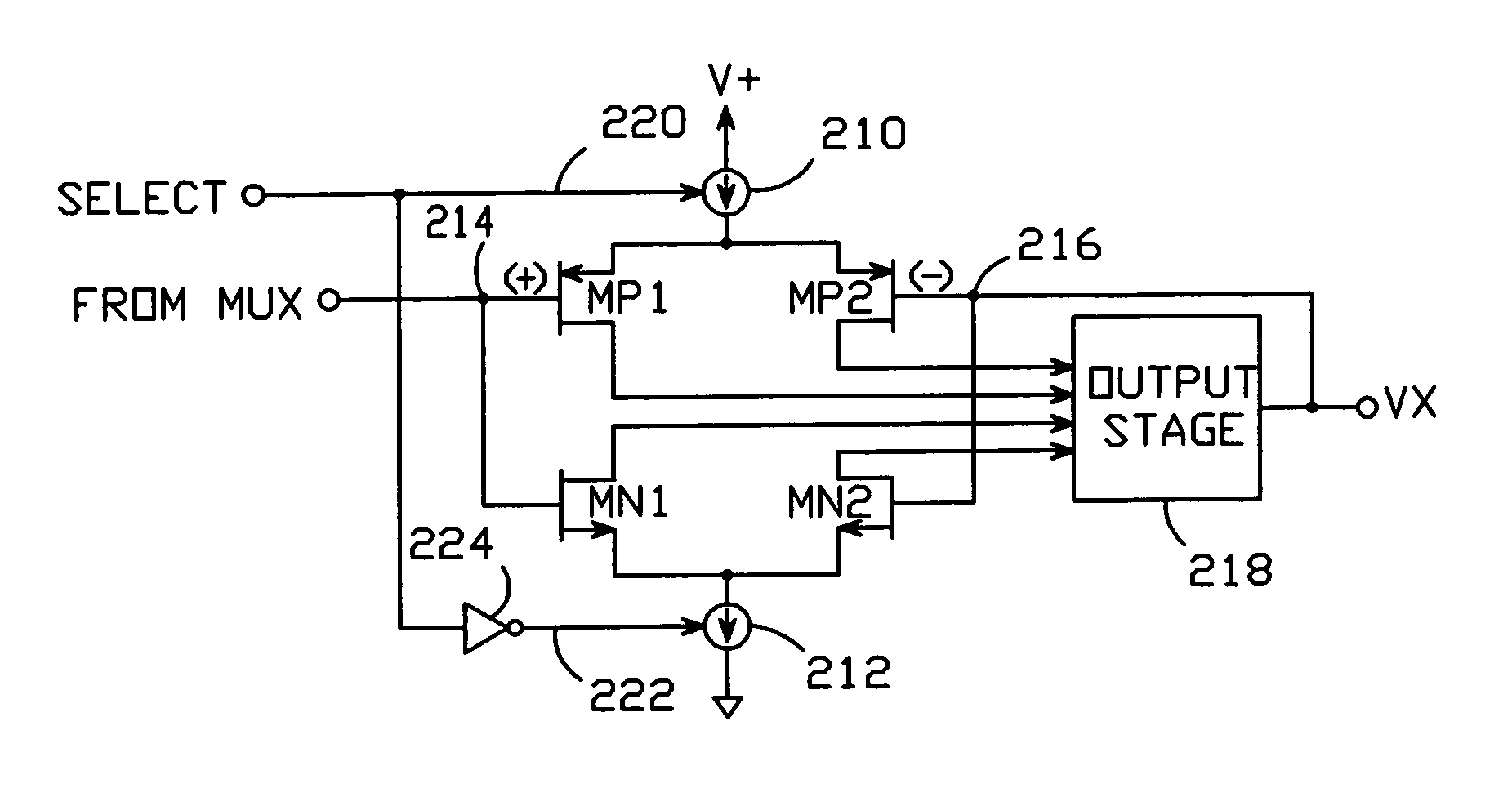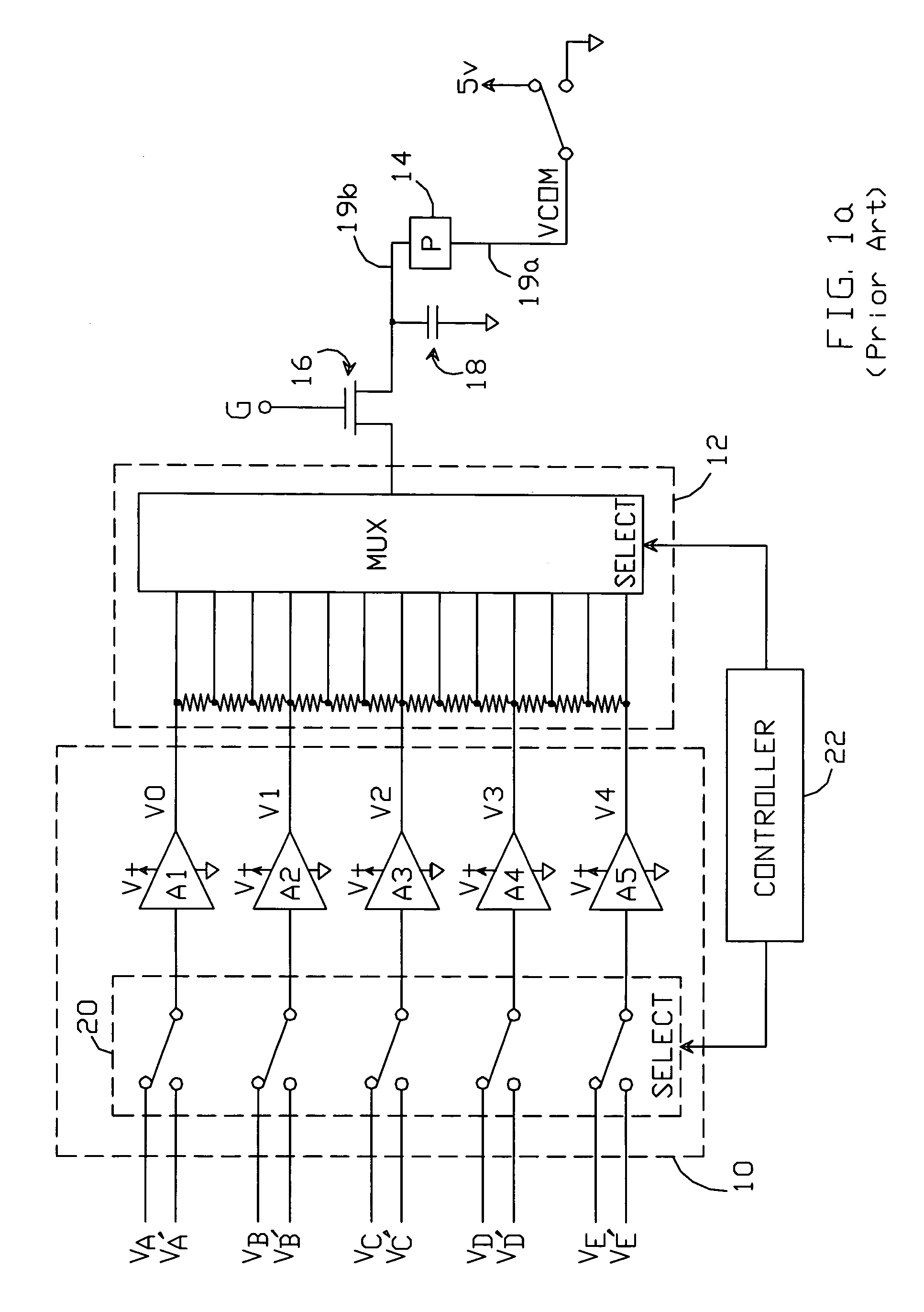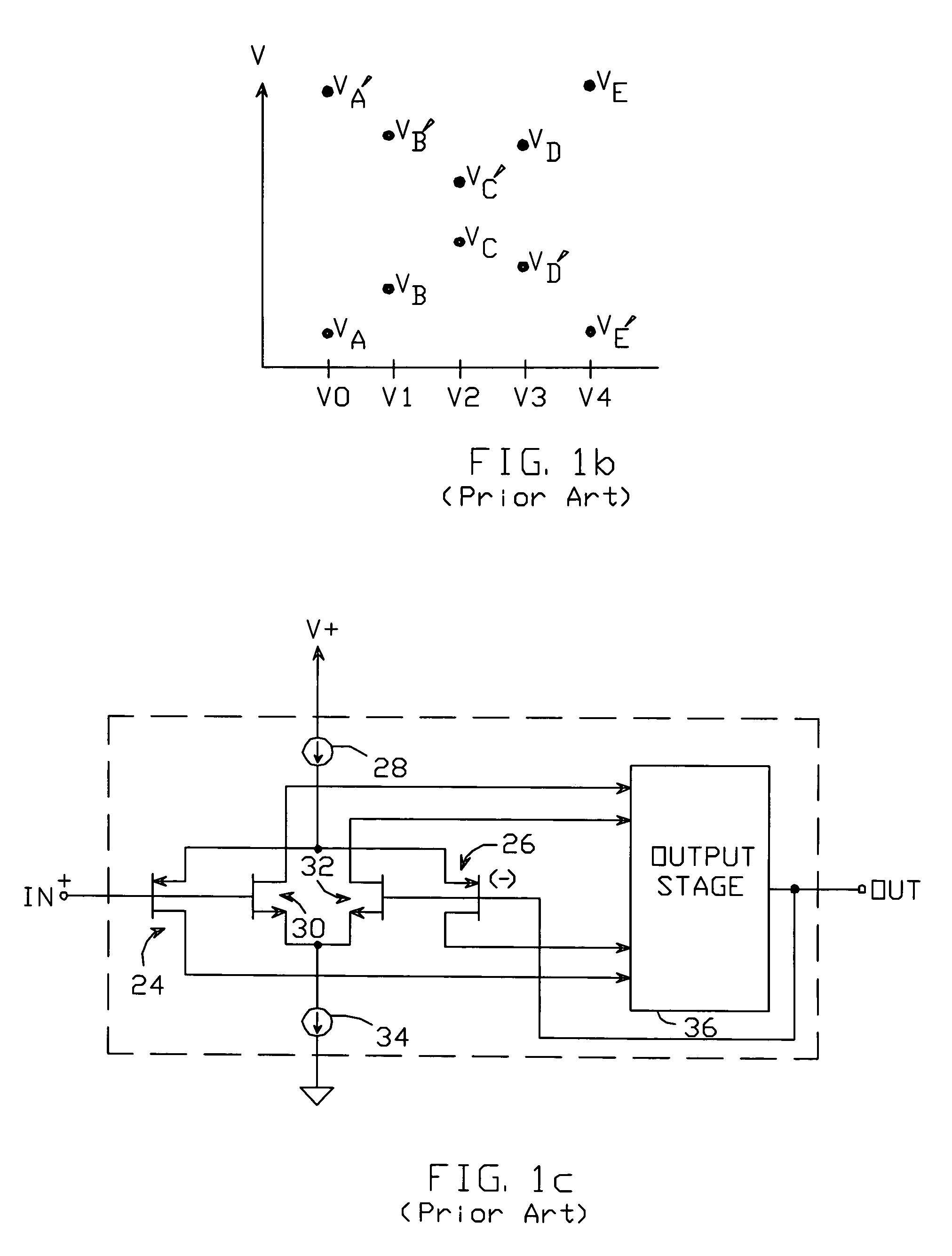Rail-to-rail amplifier for use in line-inversion LCD grayscale reference generator
a reference generator and amplifier technology, applied in the field of operational amplifiers, can solve the problems of consuming an excessive amount of supply current, 14 brightness level of an addressed pixel, and non-linear relationship between pixel transparency and applied voltage, and achieve the effect of reducing current consumption
- Summary
- Abstract
- Description
- Claims
- Application Information
AI Technical Summary
Benefits of technology
Problems solved by technology
Method used
Image
Examples
Embodiment Construction
[0028]A block diagram of an exemplary embodiment of an LCD display driver which includes a line-inversion LCD grayscale reference generator 200 in accordance with the present invention is shown in FIG. 2a.
[0029]As noted above, “ghosting” is avoided by periodically alternating the polarity of the voltage applied across each pixel so as to maintain a constant absolute voltage across the pixel. This can be accomplished by, for example, connecting the “second” terminal 19a of each pixel 14 to a voltage VCOM, which is alternately switched between first and second voltages—typically a positive supply voltage and ground, but any two voltages could be used. Simultaneously, the polarities of the drive voltages applied to the pixel's “first” terminal 19b are alternated in synchronization with the switching of the second terminal so as to maintain a constant absolute voltage across the pixel.
[0030]The alternation of the drive voltages can be accomplished with the use of a “line-inversion” gra...
PUM
 Login to View More
Login to View More Abstract
Description
Claims
Application Information
 Login to View More
Login to View More - R&D
- Intellectual Property
- Life Sciences
- Materials
- Tech Scout
- Unparalleled Data Quality
- Higher Quality Content
- 60% Fewer Hallucinations
Browse by: Latest US Patents, China's latest patents, Technical Efficacy Thesaurus, Application Domain, Technology Topic, Popular Technical Reports.
© 2025 PatSnap. All rights reserved.Legal|Privacy policy|Modern Slavery Act Transparency Statement|Sitemap|About US| Contact US: help@patsnap.com



